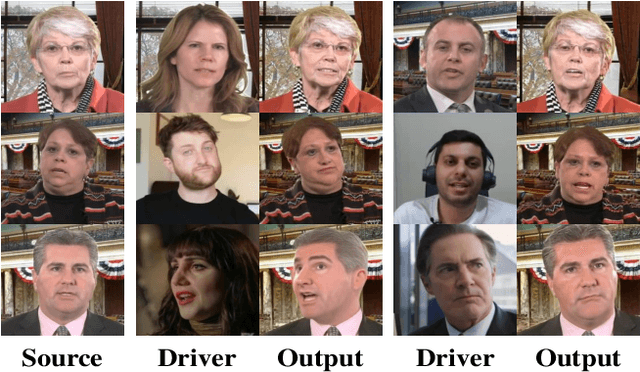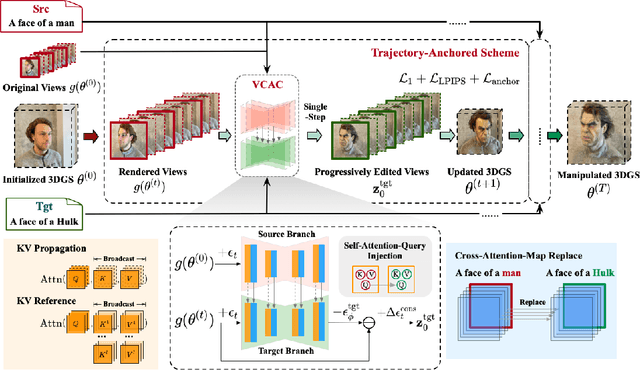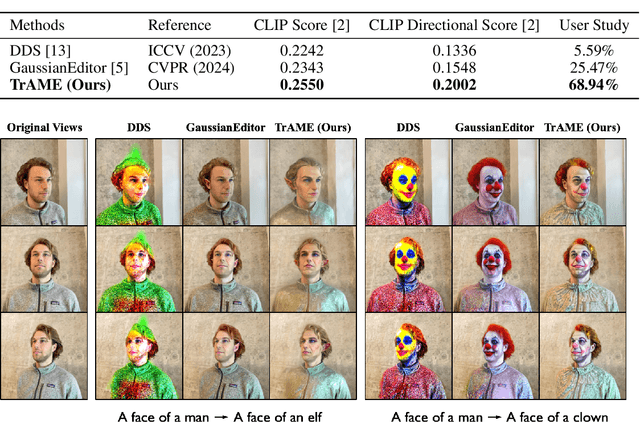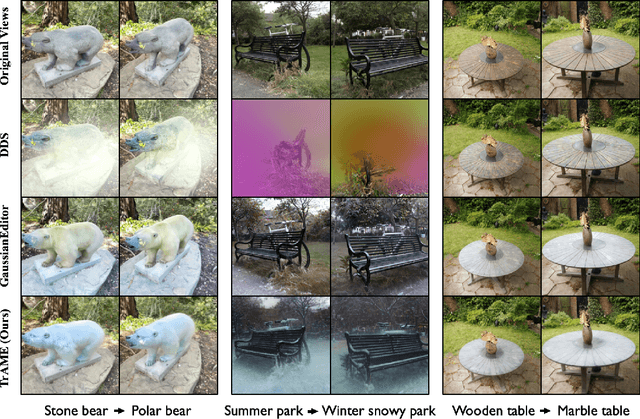Yongjia Ma
Adams Bashforth Moulton Solver for Inversion and Editing in Rectified Flow
Mar 17, 2025Abstract:Rectified flow models have achieved remarkable performance in image and video generation tasks. However, existing numerical solvers face a trade-off between fast sampling and high-accuracy solutions, limiting their effectiveness in downstream applications such as reconstruction and editing. To address this challenge, we propose leveraging the Adams-Bashforth-Moulton (ABM) predictor-corrector method to enhance the accuracy of ODE solving in rectified flow models. Specifically, we introduce ABM-Solver, which integrates a multi step predictor corrector approach to reduce local truncation errors and employs Adaptive Step Size Adjustment to improve sampling speed. Furthermore, to effectively preserve non edited regions while facilitating semantic modifications, we introduce a Mask Guided Feature Injection module. We estimate self-similarity to generate a spatial mask that differentiates preserved regions from those available for editing. Extensive experiments on multiple high-resolution image datasets validate that ABM-Solver significantly improves inversion precision and editing quality, outperforming existing solvers without requiring additional training or optimization.
UniCP: A Unified Caching and Pruning Framework for Efficient Video Generation
Feb 06, 2025



Abstract:Diffusion Transformers (DiT) excel in video generation but encounter significant computational challenges due to the quadratic complexity of attention. Notably, attention differences between adjacent diffusion steps follow a U-shaped pattern. Current methods leverage this property by caching attention blocks, however, they still struggle with sudden error spikes and large discrepancies. To address these issues, we propose UniCP a unified caching and pruning framework for efficient video generation. UniCP optimizes both temporal and spatial dimensions through. Error Aware Dynamic Cache Window (EDCW): Dynamically adjusts cache window sizes for different blocks at various timesteps, adapting to abrupt error changes. PCA based Slicing (PCAS) and Dynamic Weight Shift (DWS): PCAS prunes redundant attention components, and DWS integrates caching and pruning by enabling dynamic switching between pruned and cached outputs. By adjusting cache windows and pruning redundant components, UniCP enhances computational efficiency and maintains video detail fidelity. Experimental results show that UniCP outperforms existing methods in both performance and efficiency.
Tuning-Free Long Video Generation via Global-Local Collaborative Diffusion
Jan 08, 2025



Abstract:Creating high-fidelity, coherent long videos is a sought-after aspiration. While recent video diffusion models have shown promising potential, they still grapple with spatiotemporal inconsistencies and high computational resource demands. We propose GLC-Diffusion, a tuning-free method for long video generation. It models the long video denoising process by establishing denoising trajectories through Global-Local Collaborative Denoising to ensure overall content consistency and temporal coherence between frames. Additionally, we introduce a Noise Reinitialization strategy which combines local noise shuffling with frequency fusion to improve global content consistency and visual diversity. Further, we propose a Video Motion Consistency Refinement (VMCR) module that computes the gradient of pixel-wise and frequency-wise losses to enhance visual consistency and temporal smoothness. Extensive experiments, including quantitative and qualitative evaluations on videos of varying lengths (\textit{e.g.}, 3\times and 6\times longer), demonstrate that our method effectively integrates with existing video diffusion models, producing coherent, high-fidelity long videos superior to previous approaches.
One-Shot Pose-Driving Face Animation Platform
Jul 12, 2024
Abstract:The objective of face animation is to generate dynamic and expressive talking head videos from a single reference face, utilizing driving conditions derived from either video or audio inputs. Current approaches often require fine-tuning for specific identities and frequently fail to produce expressive videos due to the limited effectiveness of Wav2Pose modules. To facilitate the generation of one-shot and more consecutive talking head videos, we refine an existing Image2Video model by integrating a Face Locator and Motion Frame mechanism. We subsequently optimize the model using extensive human face video datasets, significantly enhancing its ability to produce high-quality and expressive talking head videos. Additionally, we develop a demo platform using the Gradio framework, which streamlines the process, enabling users to quickly create customized talking head videos.
TrAME: Trajectory-Anchored Multi-View Editing for Text-Guided 3D Gaussian Splatting Manipulation
Jul 02, 2024



Abstract:Despite significant strides in the field of 3D scene editing, current methods encounter substantial challenge, particularly in preserving 3D consistency in multi-view editing process. To tackle this challenge, we propose a progressive 3D editing strategy that ensures multi-view consistency via a Trajectory-Anchored Scheme (TAS) with a dual-branch editing mechanism. Specifically, TAS facilitates a tightly coupled iterative process between 2D view editing and 3D updating, preventing error accumulation yielded from text-to-image process. Additionally, we explore the relationship between optimization-based methods and reconstruction-based methods, offering a unified perspective for selecting superior design choice, supporting the rationale behind the designed TAS. We further present a tuning-free View-Consistent Attention Control (VCAC) module that leverages cross-view semantic and geometric reference from the source branch to yield aligned views from the target branch during the editing of 2D views. To validate the effectiveness of our method, we analyze 2D examples to demonstrate the improved consistency with the VCAC module. Further extensive quantitative and qualitative results in text-guided 3D scene editing indicate that our method achieves superior editing quality compared to state-of-the-art methods. We will make the complete codebase publicly available following the conclusion of the double-blind review process.
CoSSegGaussians: Compact and Swift Scene Segmenting 3D Gaussians with Dual Feature Fusion
Jan 30, 2024Abstract:We propose Compact and Swift Segmenting 3D Gaussians(CoSSegGaussians), a method for compact 3D-consistent scene segmentation at fast rendering speed with only RGB images input. Previous NeRF-based segmentation methods have relied on time-consuming neural scene optimization. While recent 3D Gaussian Splatting has notably improved speed, existing Gaussian-based segmentation methods struggle to produce compact masks, especially in zero-shot segmentation. This issue probably stems from their straightforward assignment of learnable parameters to each Gaussian, resulting in a lack of robustness against cross-view inconsistent 2D machine-generated labels. Our method aims to address this problem by employing Dual Feature Fusion Network as Gaussians' segmentation field. Specifically, we first optimize 3D Gaussians under RGB supervision. After Gaussian Locating, DINO features extracted from images are applied through explicit unprojection, which are further incorporated with spatial features from the efficient point cloud processing network. Feature aggregation is utilized to fuse them in a global-to-local strategy for compact segmentation features. Experimental results show that our model outperforms baselines on both semantic and panoptic zero-shot segmentation task, meanwhile consumes less than 10% inference time compared to NeRF-based methods. Code and more results will be available at https://David-Dou.github.io/CoSSegGaussians
 Add to Chrome
Add to Chrome Add to Firefox
Add to Firefox Add to Edge
Add to Edge